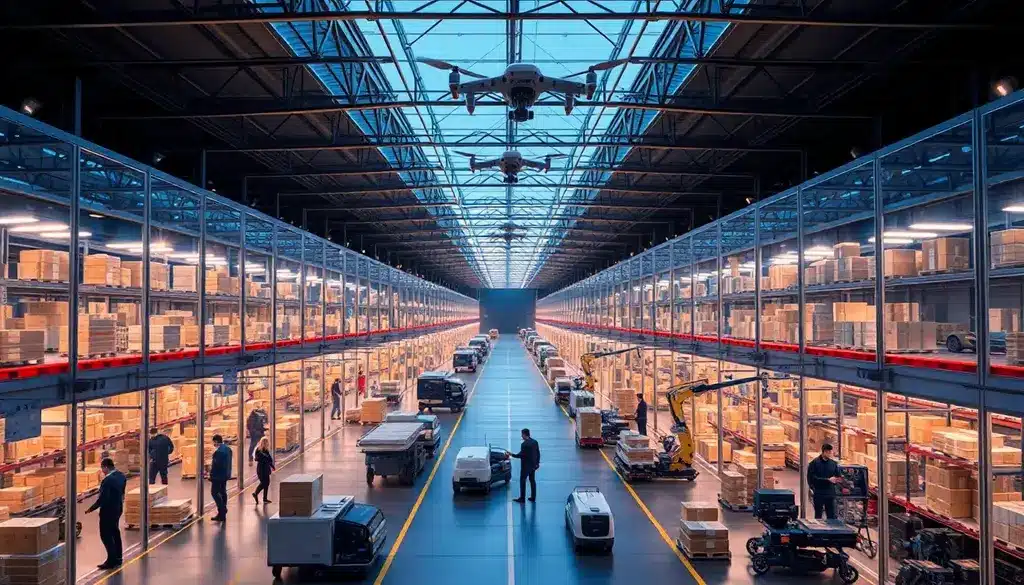
Running a 3PL warehouse business can be difficult, but it can be a successful endeavor with the proper knowledge and tools. This article will discuss some 3PL best practices and offer tips for success. We will also highlight Argos software, which can help third party logistics companies manage their warehouses more efficiently. With the right tools and advice, you can improve your 3PL business and generate more revenue.
As operators performing essential roles within supply chains, we’re all looking for a competitive advantage. And in the business of third-party logistics (3PL), that advantage is becoming more and more difficult to find. Because of the competitive nature of the industry, 3PL providers must find ways to optimize their operations to retain and grow their customer base. Here are some tips and best practices for success in the 3PL industry:
Understand Your Customer’s Business
It is essential that third party logistics companies understand their customers’ businesses and what they are trying to achieve. This understanding will help 3PL providers develop the most efficient and effective solutions for their customers.
Use the Right 3PL Software and Technology
One of the best ways to improve your 3PL business is to use the right 3PL software and technology. On the software side of things, there are many software solutions available such as warehouse management systems (WMS), Transportation Management Systems (TMS), Enterprise Management Systems (EMS), and more.
It’s important to find the software that meets your specific needs. The right software can help you automate tasks, improve communication, and make better decisions. One software solution that we recommend is Argos. It is designed for 3PL warehouses and can help you manage your entire supply chain more efficiently.
In terms of technologies, here are a few that can help you improve your 3PL business:
- Automation Technologies: These can help you automate tasks and improve efficiency. Technologies include robotics, conveyor systems, and automated storage and retrieval systems.
- Tracking Technologies: These include barcodes, RFID tags, and GPS tracking. These technologies can help with inventory management and keeping track of assets more effectively.
- Communication Technologies: These include APIs (Application Programming Interface) and EDIs (Electronic Data Interchange). These technologies help improve communication between software platforms as well as with your customers and partners.
Ensure Your Inventory is Accurate
Another best practice for successful 3PLs is to ensure you are accurately managing inventory. This can be a challenge because you need to track a lot of different products and SKUs. But, it’s important to have an accurate inventory to help avoid stockouts and shortages. It can also help you save money on storage costs. There are many different ways to track inventory, including barcodes, RF scanning technology, RFID tags, and software solutions.
Consider implementing a cycle counting program to help ensure your inventory is always accurate. This is a process where you count a small portion of your inventory each day, week, or month. This can help you catch errors and discrepancies quickly.
Communicate With Your Customers and Supply Chain Partners
Another best practice for successful 3PLs is to communicate with your customers and partners. Communication is essential for maintaining relationships and ensuring that everyone is on the same page. There are many different ways to communicate, including phone calls, emails, text messages, and social media.
Communication is especially important when there are issues or problems. You need to be able to quickly and effectively communicate with your customers and partners to resolve any issues.
Set Realistic Expectations With Your Customers
As we mentioned earlier, customers have high expectations for logistics services. It’s important for third-party logistics companies to set realistic expectations with their customers. This includes setting realistic timelines, service levels, shipping costs, etc.
If you can’t meet the expectations of your customers, it’s important to communicate this to them. This way, they can adjust their expectations accordingly.
It’s always better to over-communicate with your customers. This means keeping them updated on the status of their orders, changes in your operations, etc. This will help build trust and confidence in your company.
Optimize Your Receiving Process
One of the best ways to improve your 3PL business is to optimize your receiving process. There are many different ways to achieve this including automating tasks, improving communication, and streamlining procedures.
It’s important to ensure that your receiving process is efficient and effective. This will help you avoid delays, errors, and lost inventory.
Make sure to train your employees on your receiving process. This will help them understand the procedures and ensure that they are following the procedures correctly. Automate as much of the process as possible to help reduce errors and improve efficiency.

Incorporate an Order Picking System
An order picking system is a must-have for third party logistics companies performing order fulfillment. This system helps you automate the process of picking orders and can help improve accuracy and efficiency.
There are many different types of order picking systems, including batch picking, zone picking, waves, and sequences. Each type has its own advantages and disadvantages. You’ll need to experiment or talk to an expert to help decide which type is best for your business.
Optimize Your Warehouse Layout
Your warehouse layout can have a big impact on your business. It’s important to optimize your layout to improve efficiency and productivity. There are many different ways to optimize your layout, including using easy-to-read signage, grouping similar items together, and implementing flow management.
In addition, you should create aisles and pathways that are wide enough for your employees and equipment.
Pay Attention to the Data
Data is important for understanding the performance of your 3PL business. There are many different types of data you should track, including inventory levels, order volume, customer satisfaction, on-time delivery rates, transportation costs, etc.
This data can help you understand where your supply chain business is performing well and where there is room for improvement. It can also help you make decisions about your operations, marketing, and business strategy.
Invest in Ongoing Employee Training
As a third party logistics provider, your employees are among your most important assets. That’s why it’s important to invest in their ongoing training and development. Train employees on your warehouse procedures, safety protocols, and the use of any software or equipment.
In addition, you should provide ongoing training on improving customer service, sales, and other relevant topics.
Maintain a Clean and Organized Facility
It’s important to keep your own warehouse clean and organized to improve your efficiency, productivity, and safety. There are many different ways to do this including using appropriate storage bins, labeling everything, and keeping aisles clear.
Offer Value-Added Services
As supply chains become more complex and increase in competitiveness, value-added services can help you stand out from the crowd. These services can include packaging, assembly & kitting, product customization, and much more.
Offering value-added services can help you attract new customers and retain existing customers. It can also help you improve your margins.
Manage Costs
Supply chain businesses need to be aware of their costs in order to be successful. There are many different types of costs in the 3PL, freight, and logistics industry, including labor costs, transportation costs, inventory costs, and facility costs.
It’s important for third party logistics providers to track their costs to understand where their money is going. Then look for ways to reduce shipping costs, lowering freight spend, labor costs, and other expenses. For example, one way to lower costs is by working to build better carrier relationships.
Become a Leading Third-Party Logistics Provider
By following these 3PL best practices, you can make improvements to your business and warehouse operations. They will help increase efficiency, productivity, and improve your bottom line. In addition, you’ll be able to better serve your customers and build longer-lasting relationships.
To help your supply chain business succeed, consider Argos 3PL software. It’s the perfect solution for 3PL businesses of all sizes. It’s easy to use and is packed with features. Contact us today to learn more about Argos and how it can help your business




